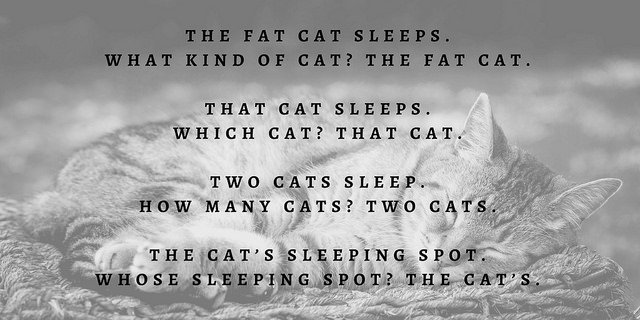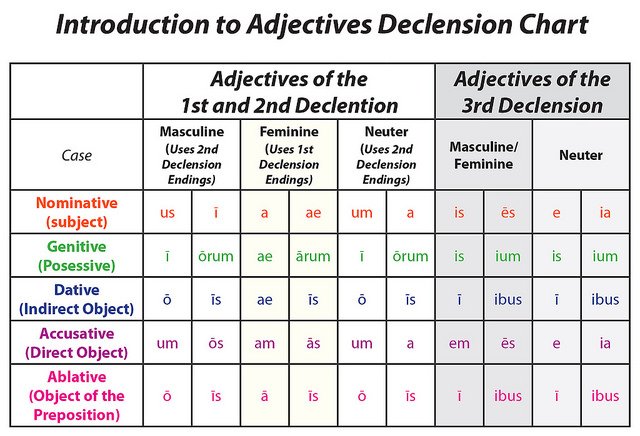
Salvē!
It’s time to tackle adjectives! You understand nouns, you know that Latin is an inflected language and get that the endings change depending on the job the noun is doing. You’ve memorized the first 5 declensions. You’re ready to expand your vocabulary.
Remember that one of the reasons we study Latin is to learn our own language better. So before we start with adjectives, it’s a good idea to remember how they are used in English.
An adjective describes or modifies a noun.
So in this phrase:

“Red” describes coat.
Adjectives tell what kind, which one, how many or whose.

Got the English review? Bonus! Let’s move on to Latin.
Latin adjectives still serve the same purpose they do in English - they describe or modify the noun. And just like Latin nouns, they decline. They have three genders and decline in each gender. This is when you’ll understand why it’s so important to learn the gender of each of your nouns when you memorize your vocabulary!
Your most basic and important rule for adjectives is this:

So if your masculine noun is in the singular nominative, your adjective must be declined the same way.
Adjectives use the endings of either the first and second declensions, or the endings of the third declension.
We’ll start with adjectives of the first and second declension.
A few nouns of the first and second declensions:
Bonus, a, um good
Malus, a, um bad
Primus, a, um first
Frigidus, a, um cold
Longus, a, um long
Altus, a, um deep
Magnus, a, um great
Why is our vocabulary giving us three endings? So we know that these are First/Second declension adjectives.
Us is the masculine nominative ending, a is the feminine nominative ending, um is the neuter nominative ending. When we see those three endings listed, it’s our clue to know what endings to use.
The masculine declines like the 2nd declension
The feminine declines like the 1st declension feminine
The neuter declines like the 2nd declension neuter

Now, here’s the part that confused me for a long time. You need to match the adjectives to the noun in number, gender and case, but they don’t match in declension. So if you are modifying a first declension masculine noun, you will still use the second declension endings for your adjectives. Is that as clear as mud? Where many Latin students get confused is that they want to simply add the noun’s ending to the stem of the adjective - this doesn’t work (wouldn’t it be nice if it did!). Decline your noun in it’s declension, and then use the tools of gender, number and case to decline your noun in it’s proper declension (sometimes they will match up, and then it's a nice rhyme).
So the phrase “good sailors” would be nautae boni, not nautae bonae.
Here we have nautae, which is a masculine noun in the nominative plural case.
Gender: Nautae is masculine, so our adjective needs to be masculine.
Number: Nautae is plural, so our adjective needs to be plural.
Case: Nautae is in the nominative, so our adjective needs to be nominative.
We look at the Adjectives of the 1st and 2nd Declension columns on our handy dandy Introduction to Adjectives chart above.
First, look in the masculine column.Next, go to the lower half to look at the plural endings.Lastly, find the nominative ending. Now it’s your turn to try!
Practice declining all of the adjectives in the vocabulary in all three genders.
Remember that the key to Latin is practice, practice, practice!
Once you’re feeling comfortable with all of the endings, try translating the following:
- The great king (as object)
- The deep rivers
- The bad servants (as object)
- The long road
Answers below the meme.

- Magnam regēm
- Flūminibus altīs
- Servōs malōs
- Longā viā
